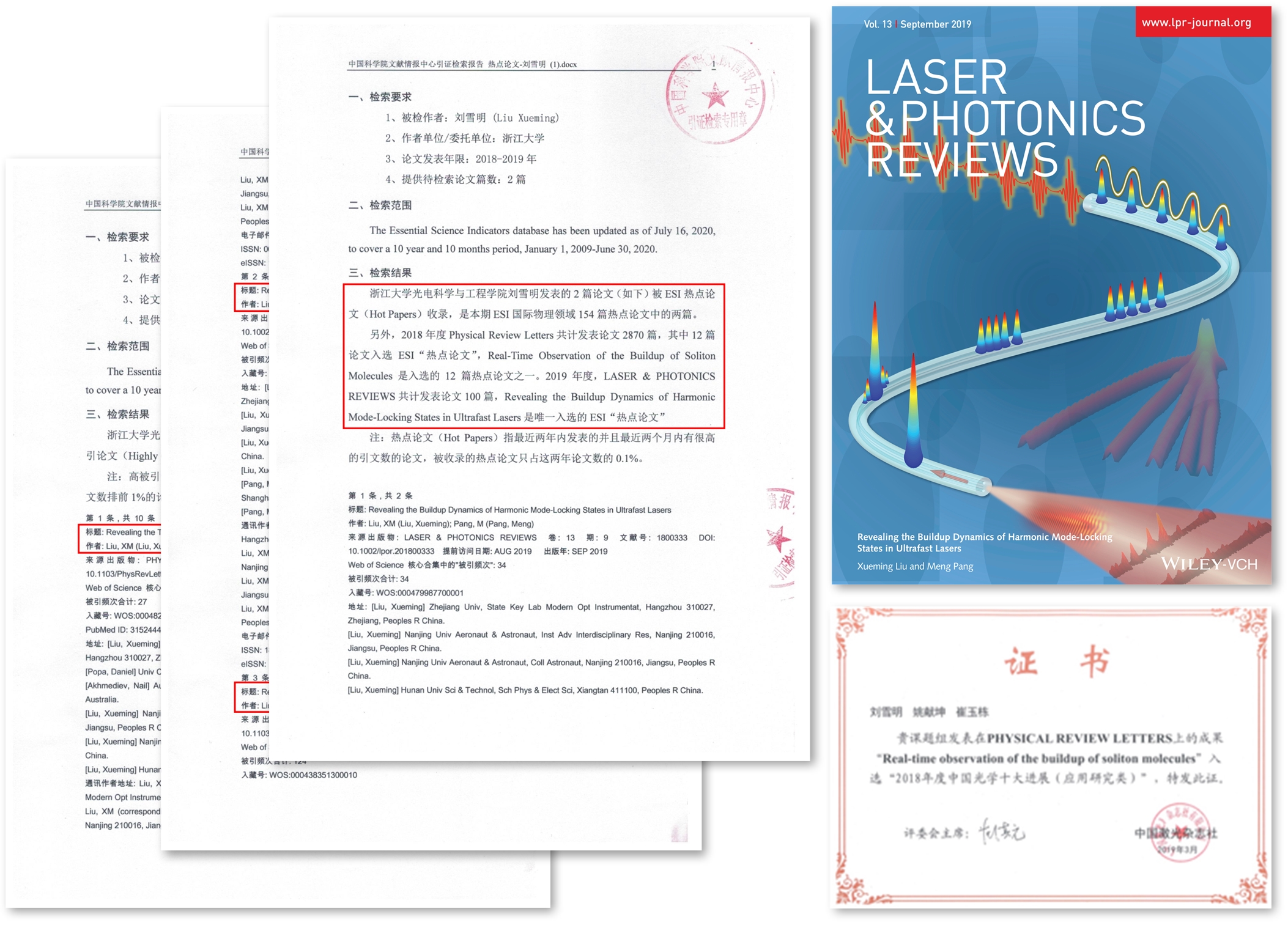For a long time, real-time measurement of complex optical ultrafast processes has been an important subject in the field of ultrafast lasers.However, because the detection speed of electronic instruments is limited by mechanics or electronics, it is difficult to obtain non-repetitive transient information. How to realize real-time measurement of transient physical phenomena is always a great challenge for researchers.The appearance of time-spread dispersion Fourier transform (TS-DFT) overcomes the speed limitation of traditional spectrometers and can realize fast real-time spectral measurement.In recent years, based on TS-DFT technology, real-time detection of ultra-fast instantaneous evolution of optical pulse has been realized, and new understanding of the interaction between optical solitons has been gained.However, the complete dynamic process of soliton formation in ultrafast optical systems has not been reported.
Recently, a group of Pro.Xueming Liu of Zhejiang University through clever design fiber laser system, using TS - DFT technology, first observed in a mode-locked fiber laser, harmonic mode-locked soliton soliton and soliton molecules complete the formation process, as well as ultrafast laser from the Q (Q - switching) to the clamping (mode locking) complete the conversion process, has made an important breakthrough in the field of ultrafast laser nonlinear.Molecules, the team found that the soliton soliton formation from enhance relaxation oscillation to mould and from the Q to the lock of the complete dynamics process of two different, and the loss and recovery effect of dispersive wave, gain, acoustic resonance and light mechanical interactions in harmonic mode-locked formation of the early, middle and late of the formation and stability of harmonic mode-locked played an important role.These studies contribute to the deep understanding of the soliton formation mechanism in ultra-fast lasers, bring a new understanding of ultra-fast transient dynamics and pulse evolution path, and have important significance for the design and application of ultra-short pulse lasers.

(a) Soliton molecules (b) Q to mode locking (c) harmonic mode locking

Relevant research results have been published in journals such as Physical Review Letters and Laser & Photonics Reviews.[Physical Review Letters 121, 023905 (2018), Physical Review Letters 123, 093901 (2019), Laser & Photonics Reviews 13, 1800333 (2019)]
On July 17, 2020, the document information center of Chinese Academy of Sciences citation retrieval, according to a report of the team to complete 3 Papers were ESI highly cited Papers included, including "Physical Review Letters, 121, 023905 (2018)" in ESI Hot Papers (Hot cca shut), is the 2018 Physical Review Letters included in one of the 12 Hot paper, was named "2018 China optical ten progress (application)";"Laser & Photonics Reviews 13, 1800333 (2019)" is the only ESI hot paper among the 100 papers published by Laser & Photonics Reviews in 2019 and selected as the back cover of the current issue.

